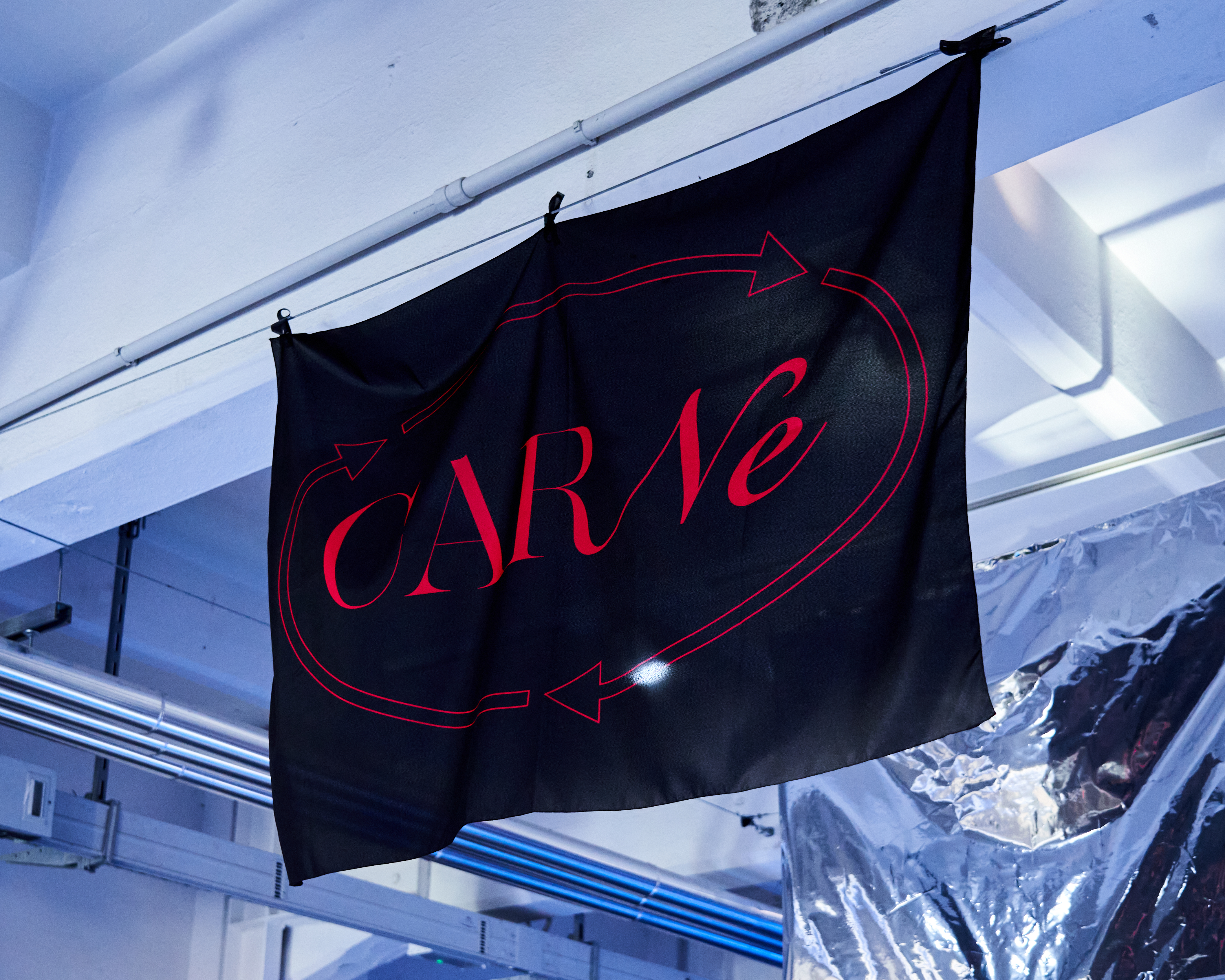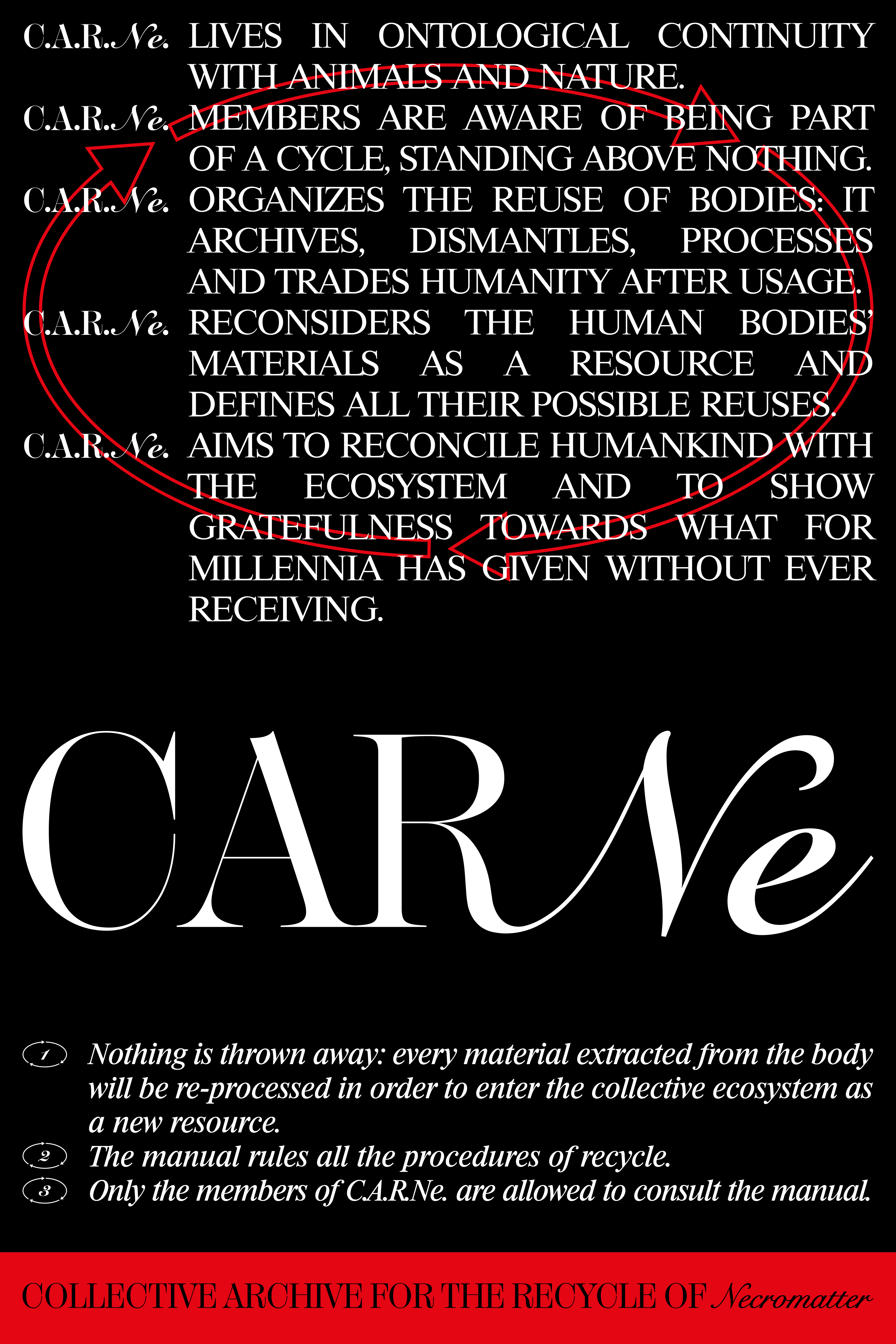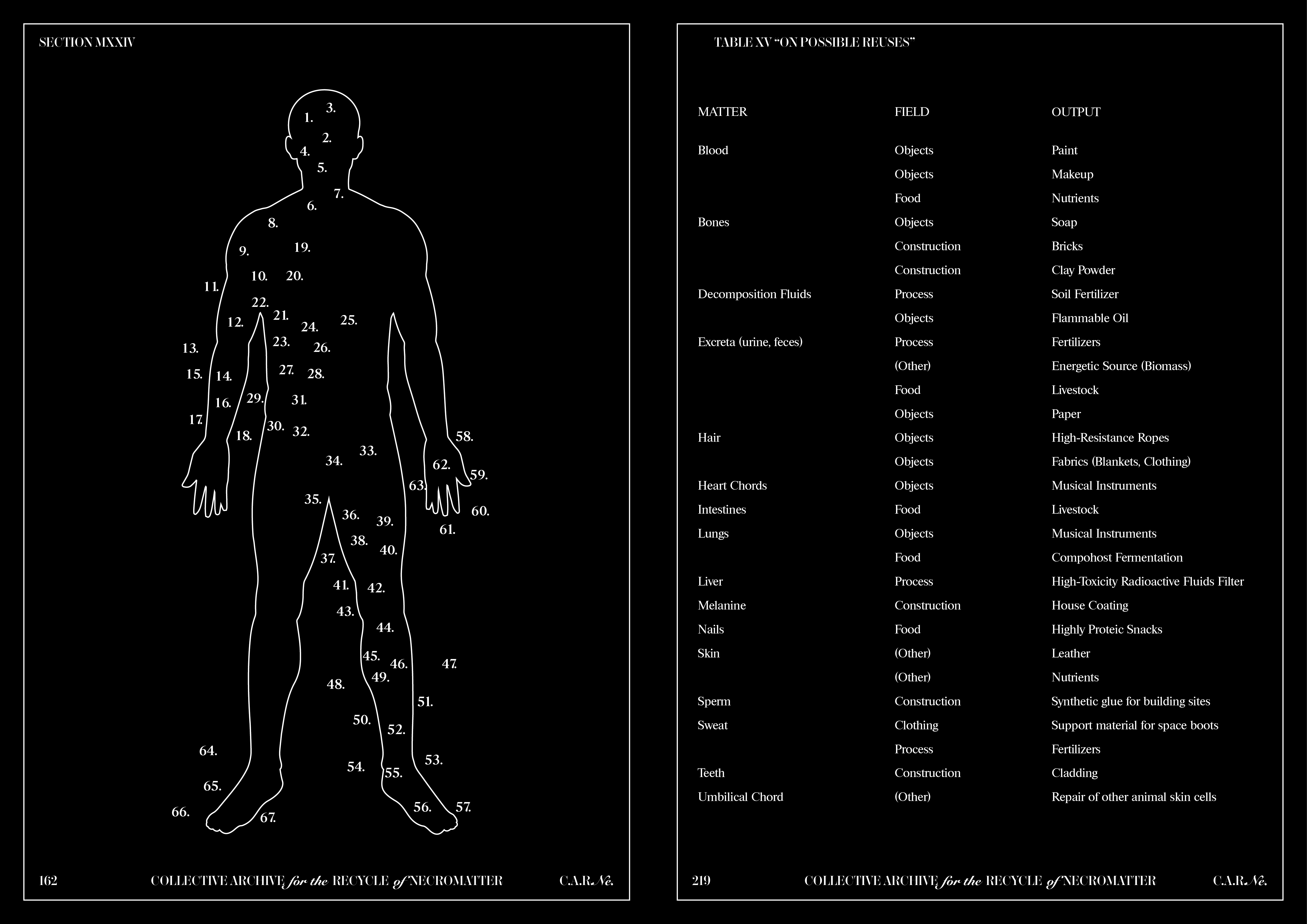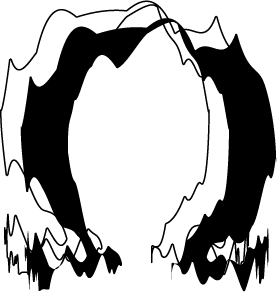c.a.r.ne.*

Fig. #01. Institutional flag. The signature logo is characterized by a chimeric, twofold typography which aims to reflect both the scientific and the spiritual sides of the institution. Photo Credits: Lorenzo Basili, 2022.
In the future, but not so far. The world doesn’t revolve anymore around humankind: human beings have become again part
of a cycle, standing above nothing. Humans now identify themselves as – or better “with” – the
living ecosystem that flows both inside and outside of them, before and after them. Their bodies
cannot be conceived anymore as personal devices, but rather they are landscapes: earthly vessels that host millions of microorganisms in an endless
exchange with the whole ecosphere. It’s a life in ontological continuity with non-human animals
and nature. And just like any other living organism, humans don't simply keep
exploiting the world without giving anything back anymore. They have become aware of their
potential: they are resources too.
If we are not Earth’s troublemakers anymore, can we imagine a non-appropriative interaction between humans and the “otherness”, where
communication seeks a conscious interconnection?


C.A.R.Ne. deals with future ecology on an ethical and larger scale: it’s about the relationship
between the living organisms, but also between the dead ones.
C.A.R.Ne. – acronym for “Collective Archive for the Recycle of Necromatter” – is a post-mortem
institution that collects, archives and extracts materials from dead corpses in order to return
them to the collective ecosystem. The reuse of human matter as a resource and as a common
good subverts the contemporary anthropocentric dynamic that defines everything, in the eyes of
humans, as a resource – except for humans themselves. To reconsider the human body’s
materials as a resource after their usage and to define – in a pragmatic, non-romantic and
fantastic way – all its possible reuses represents the attempt to define a far-off and longed-for
reconciliation with nature.


Fig. #04-05. The institutional uniform roots its cultural inspiration in funerary artifacts – such as the body bag – while also resembling the majesty of spiritual dresses. Photo Credits: Lorenzo Basili, 2022.
All of C.A.R.Ne.’s necropolitical regulations are collected on a ceremonial manual for the recycle
of human matter: conceived as an open archive, visually at the edge between an encyclopedia
and a sacred book, it provides rigorous guidelines for the extraction of materials from human
corpses and for all their possible reuses. After the collection process has been completed, the
archived materials are indeed treated as resources (products), and thus re-inserted within the
productive system, in synergy with other institutions.
 Fig. #06. Table excerpt from the Manual showcasing a list of possible reuses between a selection of body parts.
Fig. #06. Table excerpt from the Manual showcasing a list of possible reuses between a selection of body parts.
To provide an example, on demand by construction companies, human bones are dried and
re-processed into clay powder mixtures for bricks, while high-density liquids such as sperm and
mucus are extracted and worked with synthetic compounds into industrial glue for building sites.
Other bodily fluids follow similar recycling paths: melanin is applied as a house-coating layer
due to its protection properties against solar radiations, and oil is extracted from decay fluids
and converted into fuel for sustainable lighting systems. Umbilical cord tissue stored from
expired embryos are employed for the repair of plant-based and animal cells. Human organs,
instead, are extracted whole – such as the liver, which is preserved to become a filter for
high-toxicity radioactive waste.
The funerary process thus becomes a waste-sorting ceremony that both aims to celebrate the
historical past of bodies and to re-assign them as novel supplies to the ecosphere.
Project team: Davide Marcianesi, Alessandro Pasero, Preethisakana Mathisekar, Anna Raffaghello, Ludmila Secchin. Curated by Linda di Pietro at BASE Milano, set design by Parasite 2.0.


 Fig. #07-09.
“Human Matter (How To Recycle It: A Manual)”. The chapters from the archive are catalogued by body
parts. Photo Credits: Lorenzo Basili, 2022.
Fig. #07-09.
“Human Matter (How To Recycle It: A Manual)”. The chapters from the archive are catalogued by body
parts. Photo Credits: Lorenzo Basili, 2022.